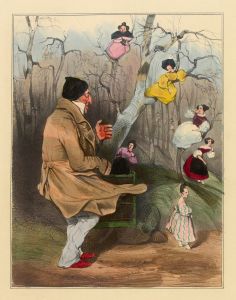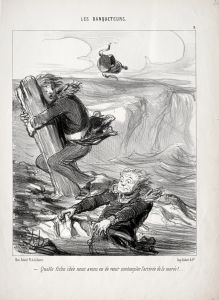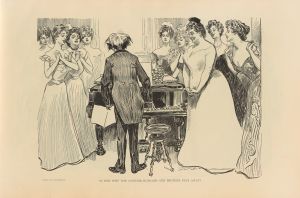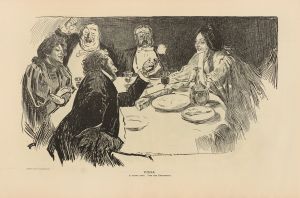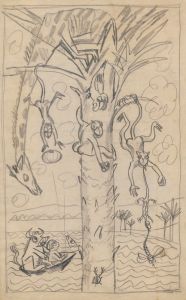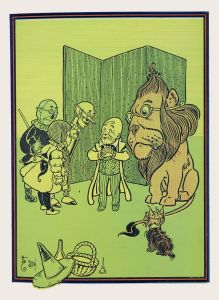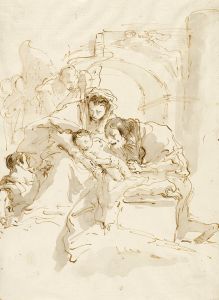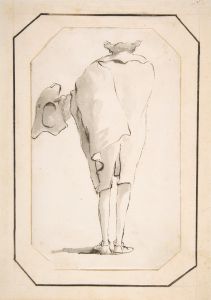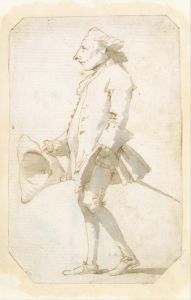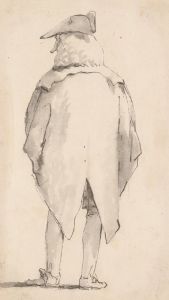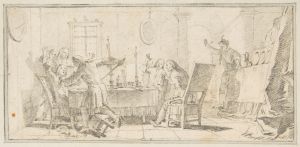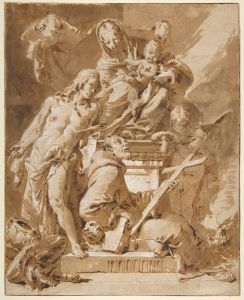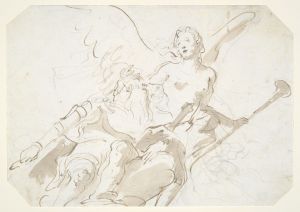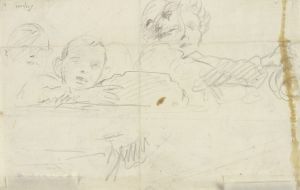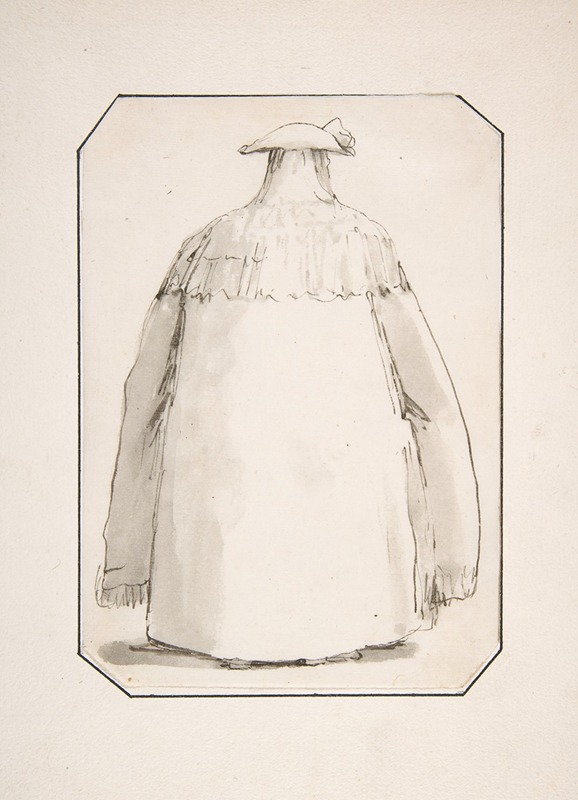
Caricature of a Fat Person Wearing a Long Cloak and a Tricorne, Seen from Behind
A hand-painted replica of Giovanni Battista Tiepolo’s masterpiece Caricature of a Fat Person Wearing a Long Cloak and a Tricorne, Seen from Behind, meticulously crafted by professional artists to capture the true essence of the original. Each piece is created with museum-quality canvas and rare mineral pigments, carefully painted by experienced artists with delicate brushstrokes and rich, layered colors to perfectly recreate the texture of the original artwork. Unlike machine-printed reproductions, this hand-painted version brings the painting to life, infused with the artist’s emotions and skill in every stroke. Whether for personal collection or home decoration, it instantly elevates the artistic atmosphere of any space.
Giovanni Battista Tiepolo, an eminent Italian painter and printmaker of the 18th century, is renowned for his distinctive style that combines the grandeur of the Baroque with the lightness of the Rococo. Among his diverse body of work is a lesser-known piece titled "Caricature of a Fat Person Wearing a Long Cloak and a Tricorne, Seen from Behind." This artwork exemplifies Tiepolo's skill in caricature, a genre that allows artists to exaggerate and satirize their subjects, often with humor and insight.
Tiepolo was born in Venice in 1696 and became one of the most successful and sought-after artists of his time. He was known for his large-scale frescoes, which adorned the ceilings and walls of palaces and churches across Europe. However, Tiepolo also produced a number of smaller works, including drawings and etchings, which reveal a different aspect of his artistic talent. His caricatures, in particular, demonstrate his keen observational skills and his ability to capture the essence of a character with minimal lines and details.
The "Caricature of a Fat Person Wearing a Long Cloak and a Tricorne, Seen from Behind" is a fine example of Tiepolo's work in this genre. The drawing depicts a rotund figure, humorously exaggerated in size, dressed in a long cloak and wearing a tricorne hat, a popular style of the 18th century. The figure is seen from behind, which adds an element of mystery and intrigue to the piece. The use of caricature allows Tiepolo to play with proportions and forms, creating a whimsical and engaging image.
This artwork is part of a larger collection of caricatures by Tiepolo, which were likely created for his own amusement or as gifts for friends and patrons. Caricature was a popular form of entertainment during the 18th century, and many artists, including Tiepolo, used it as a means to comment on society and human nature. The exaggerated features and humorous presentation in Tiepolo's caricatures often reflect the social and cultural norms of his time, providing insight into the world in which he lived.
Tiepolo's caricatures are characterized by their simplicity and elegance. He employed a light, fluid line to convey the essence of his subjects, often with just a few strokes. This economy of line is a testament to his skill as a draftsman and his ability to distill complex forms into their most essential elements. The "Caricature of a Fat Person Wearing a Long Cloak and a Tricorne, Seen from Behind" is no exception, showcasing Tiepolo's mastery of the medium.
While Tiepolo's caricatures may not be as widely recognized as his grand frescoes, they offer a fascinating glimpse into his artistic process and his playful side. These works reveal a different dimension of Tiepolo's talent, highlighting his ability to capture the humor and absurdity of human nature with grace and wit. Today, Tiepolo's caricatures are appreciated not only for their artistic merit but also for their historical significance, providing a window into the social and cultural milieu of 18th-century Europe.





